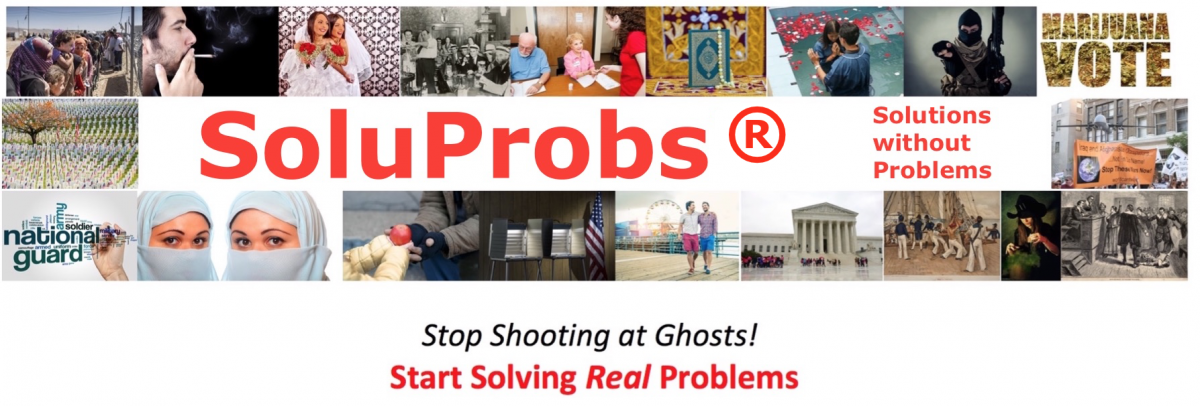Student Soluprob by Grace Grammello
Embry Riddle Aeronautical University
Presumed Problem
Using private taxi services (e.g., Uber, Lyft) is believed to be less safe than using public taxi services, as the drivers and organizational regulations of private taxi services result in crime and harm of clients more often than public taxi services, and therefore should not be trusted. There is allegedly a bigger risk to personal and financial safety when using private taxi services over public taxi services, along with the risk of personal information theft due to taxi privatization often being based through online applications.
Proposed Solution
The proposed solution is to ban private taxi services, and return to carpooling with known individuals or using publicly-regulated taxi services. Discouraging the use of private taxi services and restricting the connected applications that go along with the services would also curb the private taxi industry. If nothing else, the private taxi services should be regulated under national or state law to ensure the safety of the clients.
Evidence the Problem Doesn’t Exist
Uber claims to screen their drivers through “county, federal, and multi-state criminal background checks—and these checks typically go back seven years” (Hyde, 2015). Their background checks may exceed local taxi companies, and drivers are vetted through three private background-check firms (Hyde, 2015). Beyond this, most safety issues relating to taxis are homicides—and these are often results of cash transactions, which private companies often avoid and public companies employ. Also, private drivers have application access to passenger information, which may reduce passenger-to-driver attacks (Sobczak, 2016). In 2012, ridesharing policies began to correlate with installed government-regulated policies. For example, the California Public Utilities Commission required services such as Lyft and Uber to attain licensure from them and conduct criminal background checks, along with having a driver training program and a zero-tolerance policy on alcohol. They also must “maintain at least a $1 million per incident insurance coverage” (Rayle et. Al, 2014). The private taxi industry is adhering to the same guidelines that the public industry is, so if safety of private taxis is a concern, so should the safety of all taxi companies. For the most part, people are afraid that their private taxi drivers aren’t trustworthy or properly supervised, resulting in a lack of safety. Yet private taxi companies “use customer reviews to reflect a driver’s quality”, which works as a customer input and accountability method—and if the drivers don’t meet outlined conditions, they can be “deactivated” (Ross, 2015). A study commissioned by the City of Seattle resulted in public taxi services receiving 102 out of 105 negative comments in an industry-wide taxi poll (Ross, 2015). Perhaps public taxis are the less reliable, less safe option.
Background Narrative
The taxi industry was first subjected to regulation back in the Great Depression, when there was a call for regulation of taxi amounts and a concern of cash-based rides which “encouraged inexperienced operators to neglect good maintenance” (Posen, 2015). Recently, Private taxi services have undergone similar criticism from their public counterparts and government since their appearance around 2010, including lawsuits and arguments against their “lesser” regulations (Dong et al, 2014). Taxi lobbyists also argue that private services increase unfair competition (Posen, 2015). Though public drivers’ services undergo regulatory checks, lobbyists nitpick on the smallest background check details like “fingerprinting” in an attempt to strengthen the public taxi industry’s position (Ansari et al, 2015). Specific cases such as three rape cases in India, Chicago, and Boston, along with a San Francisco case in which a distracted Uber driver hit and killed a 6-year-old girl have been illuminated to harm private services’ reputations and raise concerns about the safety of private taxi services. In response, companies like Uber have established stronger regulations and checklists to ensure driver and rider safety. Also, insurance coverage discrepancies have been a large criticism of ridesharing; however, companies like Geico have been offering private ridesharing packages recently (Ansari et al, 2015). Furthermore, most of the proposed changes in regulation for private taxi companies center more around dispatch licensing and minimum fee charges than safety concerns, which are raised less (Posen, 2015).
Negative Consequences of the Solution
With rides being limited to public taxi services, there will be a decrease in the availability of transportation services and thus a longer wait time in large cities. Also, the healthy competition private services bring to public transportation increases the progress towards stronger safety regulations for both industries, decreases ride rates, and boosts awareness of public safety. Banning private taxi services may also increase client fear and dissatisfaction—a majority of private rideshare users report fear of alcohol use and physical harm in public taxi rides (Rayle et al, 2014). Conclusively, banning ridesharing could cost the general population time, money, and safety.
Sources
Ansari, N., Weber, L., Hood, S., Otto, C. and Sawayda, J. (2015). Uber Technologies Inc.:
Managing Opportunities and Challenges. [ebook] New Mexico: Daniels Fund Ethics Initiative, pp.1-12. Available at: https://danielsethics.mgt.unm.edu/pdf/uber.pdf
Dong, J., Filipovic, C., Leis, J., Petersen, E., Shrikhande, A. and Sudarshan, R. (2014). Uber:
Driving Change in Transportation. [ebook] Tufts University, pp.1-14. Available at: http://fletcher.tufts.edu/~/media/Fletcher/MIB/pdfs/B236%20Student%20Case%20Studies/Uber%202014.pdf
Hyde, R. (2015, October 28). Uber – Safer Than a Regular Taxi? Retrieved October 25, 2017,
from http://www.investopedia.com/articles/professionals/102815/uber-safer-regular-taxi.asp
Posen, H.A. (2015). Ridesharing in the sharing eocnomy: Should regulators impose uber
regulations on uber? Iowa Law Review, 101(1), 405-433. Retrieved from http://search.proquest.com.ezproxy.libproxy.db.erau.edu/docview/1770930427?accountid=27203
Rayle, L., Shaheen, S., Chan, N., Dai, D. and Cervero, R. (2014). App-Based, On-Demand Ride
Services: Comparing Taxi and Ridesourcing Trips and User Characteristics in San Francisco. [ebook] Berkeley, CA: University of California Transportation Center, pp.1-21. Available at: https://www.its.dot.gov/itspac/dec2014/ridesourcingwhitepaper_nov2014.pdf
Ross, H. (2015). RIDESHARING’S HOUSE OF CARDS: O’CONNOR V. UBER
TECHNOLOGIES, INC. AND THE VIABILITY OF UBER’S LABOR MODEL IN WASHINGTON. Washington Law Review, 90(3), 1431-1469. Retrieved from http://search.proquest.com.ezproxy.libproxy.db.erau.edu/docview/1764374791?accountid=27203
Sobczak, D. (2016). Taxis versus Uber: The Regulations, the People, the Money and the Future.
[ebook] Dallas, TX: National Center for Policy Analysis, pp.1-8. Available at: http://www.ncpa.org/pdfs/bg184.pdf
